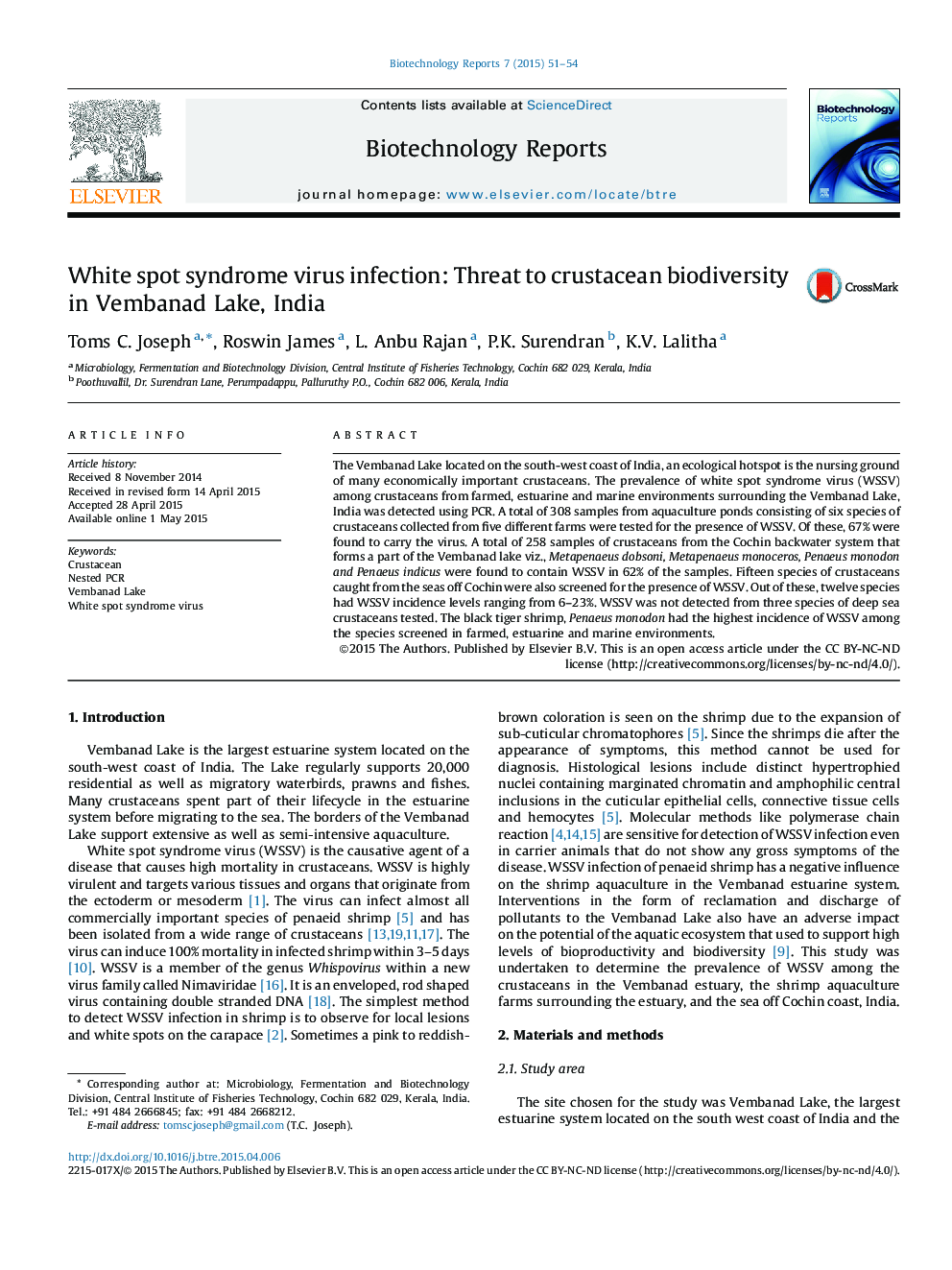| کد مقاله | کد نشریه | سال انتشار | مقاله انگلیسی | نسخه تمام متن |
|---|---|---|---|---|
| 870579 | 1471024 | 2015 | 4 صفحه PDF | دانلود رایگان |

• The prevalence of white spot syndrome virus (WSSV) among crustaceans from farmed, estuarine and marine environments surrounding the Vembanad Lake, India was detected using PCR.
• A total of 308 samples from aquaculture ponds consisting of six species of crustaceans collected from five different farms were tested for the presence of WSSV.
• WSSV was not detected from three species of deep sea crustaceans tested. The black tiger shrimp,
• P. monodon had the highest incidence of WSSV among the species screened in farmed, estuarine and marine environments.
The Vembanad Lake located on the south-west coast of India, an ecological hotspot is the nursing ground of many economically important crustaceans. The prevalence of white spot syndrome virus (WSSV) among crustaceans from farmed, estuarine and marine environments surrounding the Vembanad Lake, India was detected using PCR. A total of 308 samples from aquaculture ponds consisting of six species of crustaceans collected from five different farms were tested for the presence of WSSV. Of these, 67% were found to carry the virus. A total of 258 samples of crustaceans from the Cochin backwater system that forms a part of the Vembanad lake viz., Metapenaeus dobsoni, Metapenaeus monoceros, Penaeus monodon and Penaeus indicus were found to contain WSSV in 62% of the samples. Fifteen species of crustaceans caught from the seas off Cochin were also screened for the presence of WSSV. Out of these, twelve species had WSSV incidence levels ranging from 6–23%. WSSV was not detected from three species of deep sea crustaceans tested. The black tiger shrimp, Penaeus monodon had the highest incidence of WSSV among the species screened in farmed, estuarine and marine environments.
Journal: Biotechnology Reports - Volume 7, September 2015, Pages 51–54